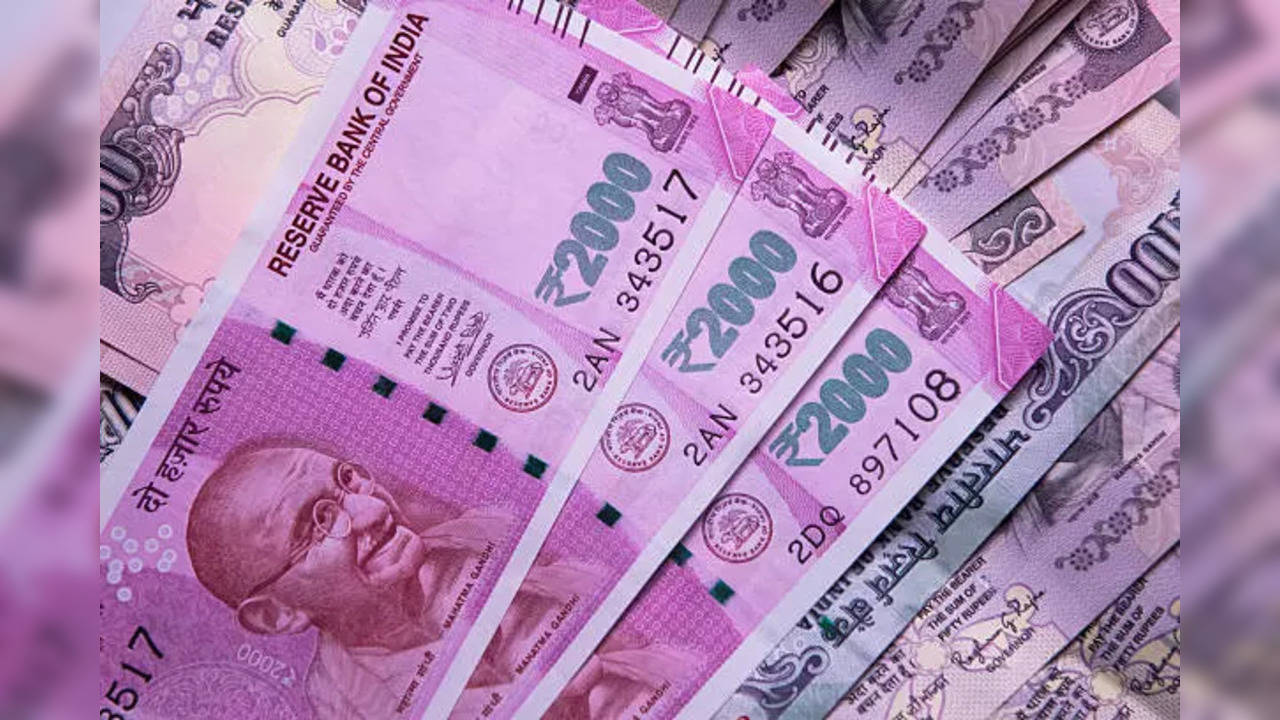Where did Rs 2000 notes go? RBI reports continuous decline
RBI report says Rs 2000 denomination notes in circulation continue to decline, they only account for 1.6 per cent of the total notes in circulation now. Why are these notes disappearing?

Every year fewer Rs 2000 notes are exchanging hands in India.
Photo : iStock
Every year fewer Rs 2000 notes are exchanging hands in India.
The Reserve Bank of India reported that the Rs 2000 denomination notes that were introduced post demonetisation in 2016 have continued their steady decline in circulation, and now only account for 1.6 per cent of the total currency notes in circulation in the country at the end of March this year.
According to the RBI annual report, 214 crore Rs 2000 notes are now in circulation as opposed to 4,554.68 crore notes of Rs 500 at the end of March 2022.
In 2020, four years after India’s demonetisation exercise, Rs 2000 denomination notes in circulation stood at 274 crore, accounting for 2.4 per cent of the total number of currency notes in circulation. A year later the figure declined to 245 crore or 2 per cent of the total bank notes in circulation. It has dropped to its lowest at the end of last fiscal.
The high value Rs 2000 note was issued by the RBI in 2016 to quickly remonetise the economy from which overnight Rs 1000 and old Rs 500 notes were flushed out. ATMs had to be recalibrated to dispense Rs 2000 notes and quickly the note became ubiquitous.
The objective of the demonetisation exercise was to bring defaulters within the purview of the banking system. The government claimed it would net tax evaders and black money hoarders. However, with Rs 2000 notes being churned out to replace the old high value notes, over the years, this note became a hoarder’s favourite currency.
In March last year, minister of state for finance, Anurag Thakur said that no new Rs 2000 notes were printed since April 2019. In a written reply in the Lok Sabha he said that the government in consultation with the central bank decides the printing of a particular denomination of notes to maintain the desired mix of currency in the public.
Reports say that the reduction in printing Rs 2000 notes was substantial right from 2017-18 when only 11.15 crore new notes were produced.
In February 2020, it was reported that the ATMs were being recalibrated to disburse more volumes of Rs 500 and Rs 100 notes, and not Rs 2000. Banks were reportedly replacing Rs 2000 note cassettes with Rs 500 ones and stashing the Rs 2,000 notes in the reserves they maintain with the RBI.
This sparked speculation that Rs 2000 notes were being phased out even if they were to remain legal tender.
Finance Minister Nirmala Sitharaman settled the rumours when she clarified that no instructions were given to banks to phase out Rs 2000 notes.
It was also believed that banks were making the changes because getting change for Rs 2000 was getting harder.
From March 2020, the RBI had decided to stop dispensing Rs 2,000 notes from its ATMs citing “customer preferences”.
In a report released in early 2020, the RBI said that the demand for high value notes were outpacing the demand for low value currency possibly indicating that hoarders were again mopping up Rs 2000 notes to store value, rather than make payments.
The central bank also pointed out that highly identical fake notes were being produced too.
As a result, the RBI has been checking the amount of Rs 2000 notes in circulation.
Demonetisation had limited success in fighting black money but it did give an impetus to digital payments, another one of the exercise’s stated goals. It also promoted the financial inclusion of many households.
However, by November 2021, 5 years after demonetisation, total currency notes in circulation continued to rise albeit at a slower pace. This was partly attributed to the Covid-19 pandemic when people opted to hold cash as a precaution to the uncertainties.
The total number of currency notes of all denominations in circulation stood at 13,053 crore as of March this year, up from 12,437 crore from the year-ago period.
The annual RBI report for 2021-22 released on Friday said : “In volume terms, Rs 500 denomination constituted the highest share at 34.9 per cent, followed by Rs 10 denomination bank notes, which constituted 21.3 per cent of the total bank notes in circulation as on March 31, 2022.”
In value terms also, the Rs 2000 denomination notes account for a small percentage of the total value of currency notes in circulation. Its value dipped from 22.6 per cent to 17.3 per cent at the end of March 2021 and further to 13.8 per cent at the end of March 2022.
Trending:
End of Article
Subscribe to our daily Newsletter!
Related News





Tech Layoffs 2024: Experts Explain Why The Tech Industry Is Most Affected

Who Built NASA's James Webb Space Telescope?

Explained: What Is 60% Kannada Rule That Saw Violent Protests In Bengaluru

Disease X Versus COVID-19: What Are Similarities And Difference Between Two

Are We Prepared to Deal with Disease X?








